« November 2008 | Main | January 2009 »
December 31, 2008
Letter from Bavaria
Today it’s Silvester. Which bears as little connection to your man Stallone as it does to the eponymous puddy cat.
Literally in means the man from out the woods, but more specifically it refers to Pope Silvester I, who died on December 24, 335. Silvester was Bishop of Rome in 314 and he was the first Bishop of Rome to call himself Pope. When he died he became a saint, as you do when you’re the Pope, and December 24 became Saint Silvester’s day.

Silvester I
Silvester lay peacefully for hundreds of years until another Pope, Gregory XIII, decided, in 1582, that the calendar everyone was using [the one with the nice pictures of medieval cats looking cute on medieval cushions] was out of kilter.

Gregory XIII
This revelation went largely unnoticed in England where, in November that year, a young 18 year old struggling playwright, by the name of William Shakespeare, married Anne Hathaway, a lady 8 years his senior.

Anne Hathaway [no relation]
The old calendar was based on one Julius Caesar had used [Roman cats looking cute on Roman cushions] and wise people everywhere had been arguing for many years that things were not entirely correct, what with the Earth moving cosmically about the heavens and not sticking to the clock like it was supposed to do.
So everyone got together and, after lots of Councils, a Compendium, several Cycles and few dozen reams of paper with lots of crossing out, it was decided that there should be 303 years of 365 days and 97 years of 366. This had the pleasing result that, when averaged out over the 400 years, a year lasted 365 days 5 hours 49 minutes and 12 seconds which, by strange coincidence, is the time it takes for the Earth to go round the Sun.
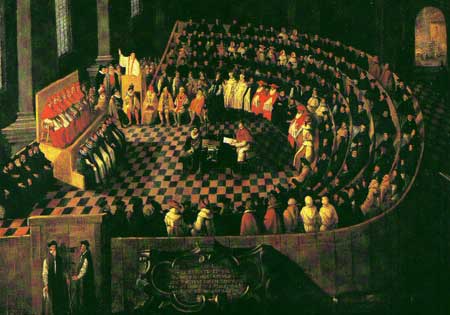
The Council of Trent, 1545 to 1563
When England finally got round to adopting the new calendar, in 1752, they had to lose 11 days in order to catch up with the rest of Europe. Not unreasonably everyone was furious, thinking that they were suddenly 11 days older and had generally lost out on possibly winning the lottery.
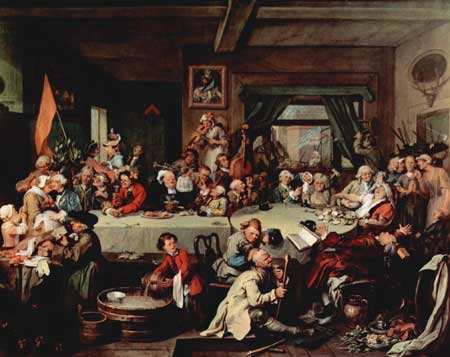
William Hogarth, 1755
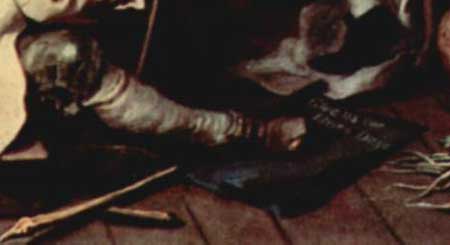
detail of above showing caption on the slate “Give us back our Eleven Days”
The upshot of all this time wasting was that the equinox happened more equinoctially, Easter happened in the Easter Holidays and, in Germany, Silvester’s day moved from December 24 to the December 31 and Silvester became synonymous with New Year's Eve. So today we celebrate Silvester.
Now, since 1582 and the invention of digital watches, things have got a whole lot more accurate. So much so that tonight we’ve got longer to celebrate the coming of the New Year. Tonight we have an extra second, a leap second. One whole second – make good use of it.
Posted by john at 02:29 PM | Comments (2)
December 30, 2008
International Comestibles
It would appear we all differ in our approach to food –
the French seem to care most about what they eat,
the Germans about how much they eat
and the British how they eat it.
Posted by john at 12:10 PM | Comments (0)
December 29, 2008
Muschelgasse
In the small town of Lohr, on the banks of the River Main [pronounced: Mine], there’s a famous old street called Muschelgasse, or as we would call it: Shell Lane – or perhaps Shellgate. It’s next to Fischergasse which leads from the river, so no prizes for guessing what the people who lived here got up to in days long gone by.
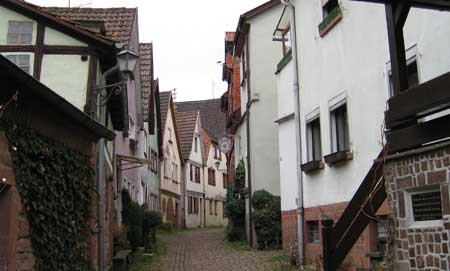
Mischelgasse is narrow, cobbled and the stuff of faerie stories, and half-way along you get a view of the Bayersturm,
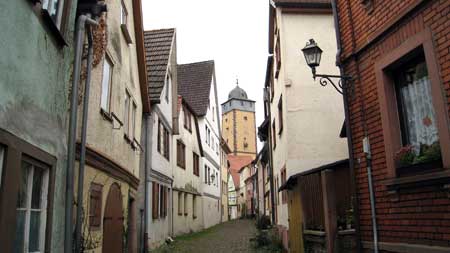
which, with its tiny unclimboutable windows, is the sort of tower to feature heavily in Grimm tales of imprisoned princesses weaving straw all night long while trying to guess the recipe for gingerbread.
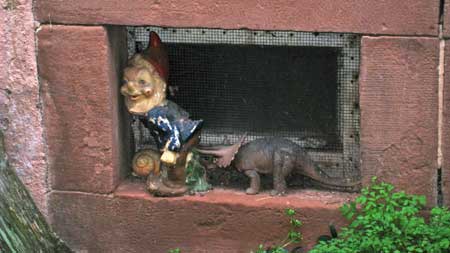
And no faerie tale street would be complete without a gnome being buggered by a triceratops.
Posted by john at 09:03 AM | Comments (4)
December 27, 2008
Watching and waiting
My winter in the Swiss Alps had two purposes, as well as spending as much time as possible with the aforementioned planks on my feet schussing about the schnee, I wanted to climb to the top of some of the tall pointy bits.
The mountain closest to hand was the Mittaghorn, a hunsey little peak, topping out at 3143m. Now sadly it has succumbed to a via ferrata which, in more brutal terms, means a series of steel cables and chopped re-enforcing bars have been hammered into the rock to form an iron ladder, complete with safety cable, all the way to the top. It also now sports a fifteen foot cross on the summit and a visitor’s book into the same bargain.
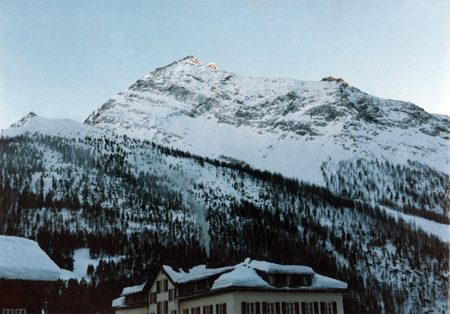
morning sun hitting the summit of the Mittaghorn, Switzerland
Back in the 80s I was planning a solo winter ascent so I needed to know as much as I could about the mountain. As I didn’t have any guide books I watched where the winds came from, how the sun fell across the slopes and what the weather patterns were. I watched and waited. The days fell into weeks as I sat on the lifts and stared at the mountain or sipped my coffee and studied its slopes.
I went up the North West ridge [the route now splattered by iron rungs] which in summer was mostly a good grab and scramble but in winter the scrambled bits lay under deep snow which heightened the excitement somewhat as I groped armpit deep through the white stuff. When the scrambled bits got steeper and before the snow sloughed off I had to tunnel my way through.
The summit was a pile of stones with a stick in the top, no visitor’s book.
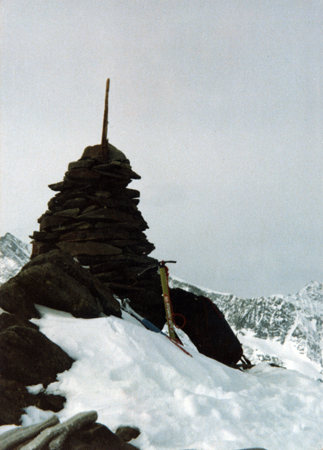
On the way back, glissading down, I hit a bit of ice and careered out of control several hundred feet down the eastern side of the ridge. It took all of those several hundred feet to get my bearings, turn on my front and use my ice axe to arrest my somewhat spectacular descent.
At first I thought I’d fallen into Italy, and not having my passport with me, I climbed up back onto the ridge. Turns out it wasn’t Italy and I was in fact only a few of miles from the village. Ha ha.
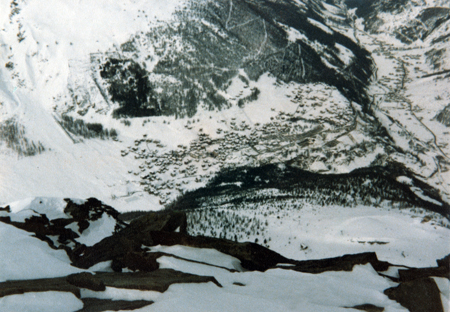
Everything looked a bit Google Earth from the top.
Posted by john at 05:05 PM | Comments (1)
watching
In the mountains, whilst squatting in the attics of a chalet in Saas Fee, Switzerland, during the winter of 1980, I watched and I waited. And so I had, during the long dark winter evenings, time on my hands.
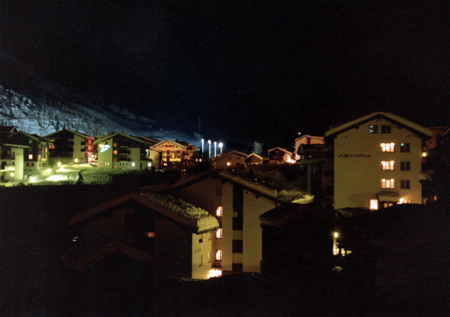
a long dark winter evening, Saas Fee, Switzerland
My needs were simply met, a mattress and duvet under the eaves, two pans for to cook macaroni cheese, and a sketchbook plus scratching tools. Mind you with nothing better to do after dark the term sketching, and it’s previously described connotations, was far from the truth. I took a lot of time over the drawings, they were, I suppose, to be more accurate, objective drawings.
I drew what I had, and I had, at the time, as well as a tangle of climbing gear [more of which later] my father’s watch.
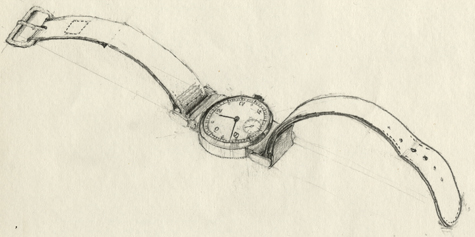
The dial took many hours, and is accurate to every minute of the hour and every five seconds of those minutes.
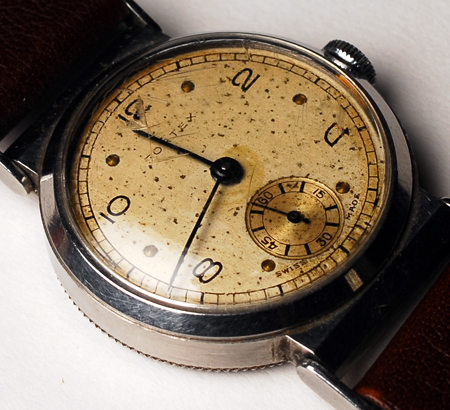
During the day, with complex laminated plastic planks clipped to my feet, I would rush headlong down the slopes, all the time watching. I was watching the mountains. I was waiting for the weather.
Posted by john at 01:50 PM | Comments (0)
December 21, 2008
two three from the sketchbooks
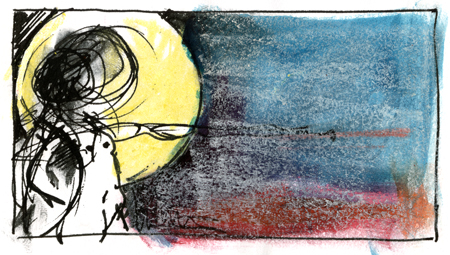
Tina and the sun, ink and oil pastel on paper
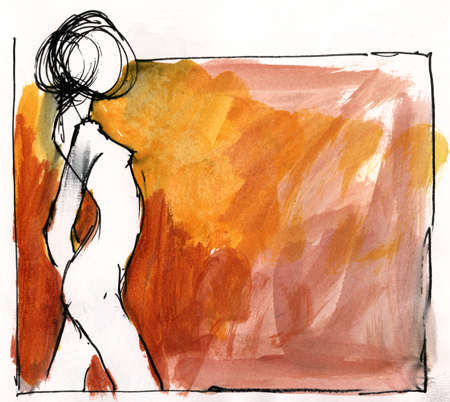
Tara profile, ink on paper
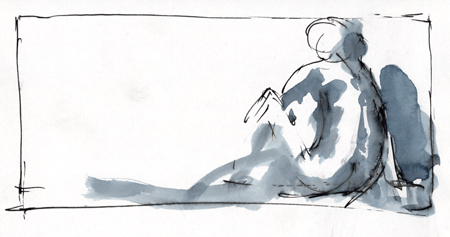
Sarah, ink on paper
Sketch is a tricky word. It has connotations of speed and flippancy, as if it’s just slap-dash. Certainly the marks are usually done quickly, but to be successful it has to draw on experience, and experience only comes with time.
UPDATE: things usually come in threes...
Posted by john at 11:18 AM | Comments (1)
December 20, 2008
tales from the photography studio, part 3



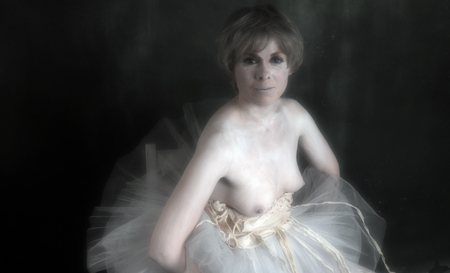
thanks to Katrin and Rachel
Posted by john at 10:05 PM | Comments (0)
December 19, 2008
half moon half orange
At 12:59 this morning, Friday the 19th December, the moon is in it's third quarter and 54% full. So just over a half moon then.
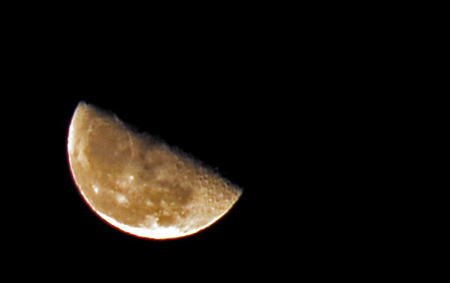
But for all that it looks more like half a slice of orange hanging in the sky.
Posted by john at 01:02 AM | Comments (0)
December 18, 2008
Tales from the photography studio, part 2
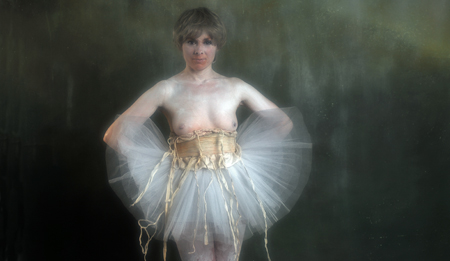
Posted by john at 04:29 PM | Comments (0)
December 17, 2008
Tales from the photography studio, part 1
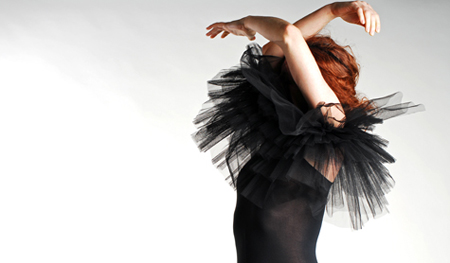
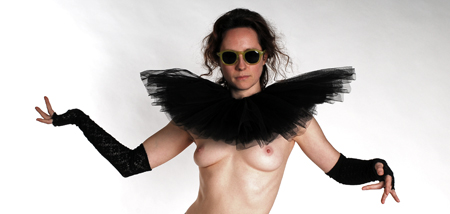
Posted by john at 07:12 PM | Comments (0)
December 15, 2008
Of colour temperature and monitor settings.
When I worked for the big television companies they would have clever men in complicated rooms wielding small screwdrivers whose job it was to maintain a consistent picture quality.
The big studio cameras were never switched off, rather they were wheeled into a small cupboard with a bright light and all pointed at a test-card for the night. This was because they were all balanced to give exactly the same picture, so when you cut from one to the next it was seamless.
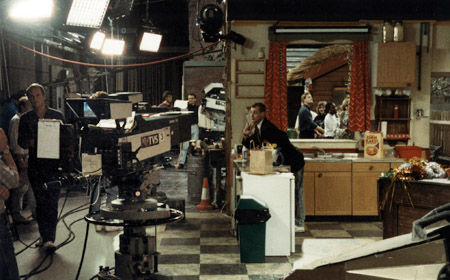
studio cameras on the set of TVS Saturday morning show No73
It took lots of oscilloscopes and dials and turny knobs to set these cameras up correctly and if you switched them off you had to start again from scratch.
Then of course you go round to Mrs. Miggin’s to watch TV and find that her set has been tuned by next-door’s cat and the whole thing looks like a hot day in a Mexican desert. You can’t win.
Much the same thing happens on the internet. Depending on how your monitor is set up the colour, intensity, contrast and brightness of the images on this page can cover most of the spectrum.
Take Picasso’s Science and Charity. Painted in 1897, it now rests in the Museu Picasso de Barcelona. Here is the relevant page from their website:
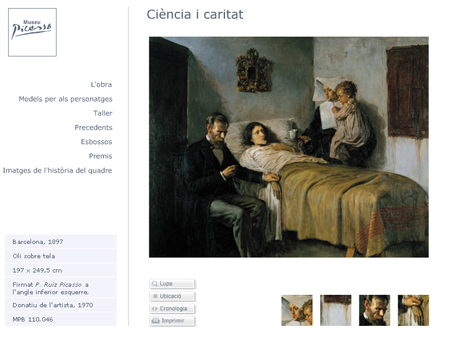
Now consider what you get from Google Images on the same subject:
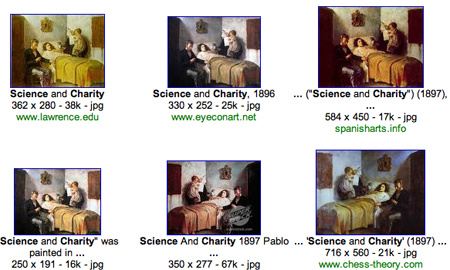
Not only do they vary in colour and intensity, but also in orientation.
Even the great artists don’t get it right first go. It takes time to construct a painting. I found all these sketches on the excellent On-line Picasso Project:
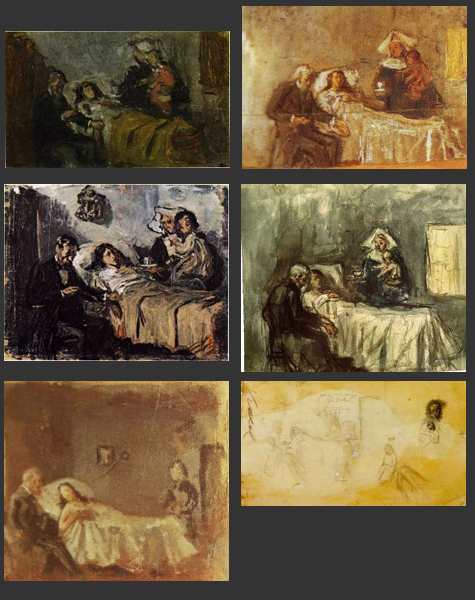
Note, however, none of them is flipped horizontally. How come eight of the 18 images on the first Google page are flipped horizontally? You can almost forgive hanging a Rothko the wrong way up, though really they should know better - but to flip a figurative painting? Why?
Posted by john at 06:03 PM | Comments (0)
December 14, 2008
any colour you want so long as it's white
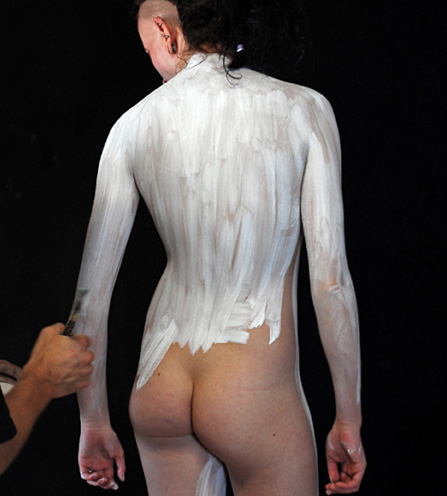
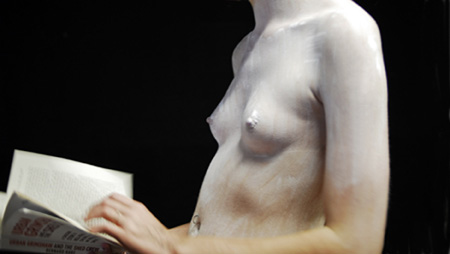
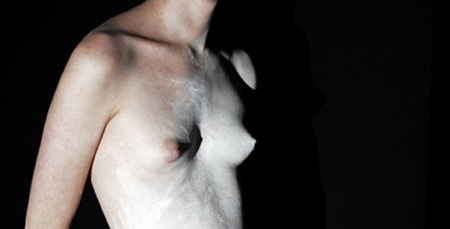
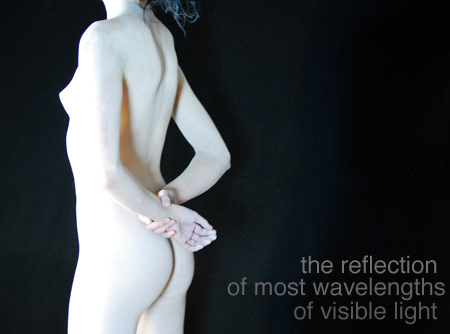
Posted by john at 10:22 PM | Comments (0)
December 11, 2008
big round orange things

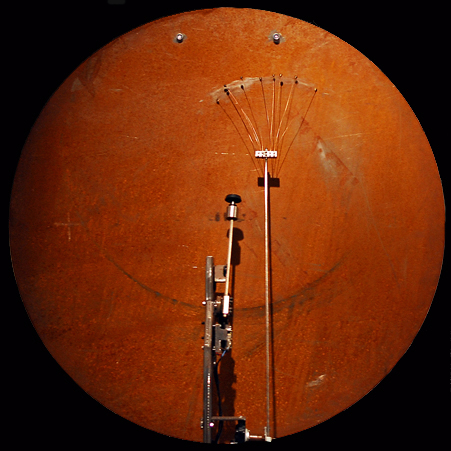
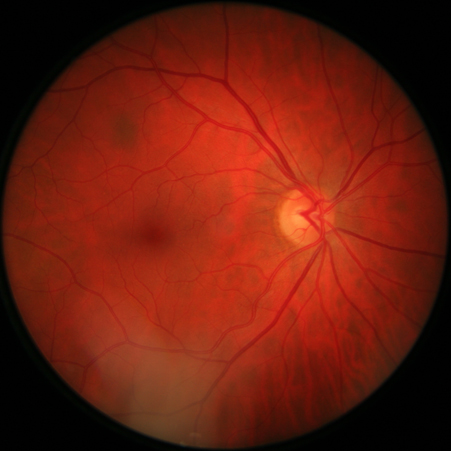
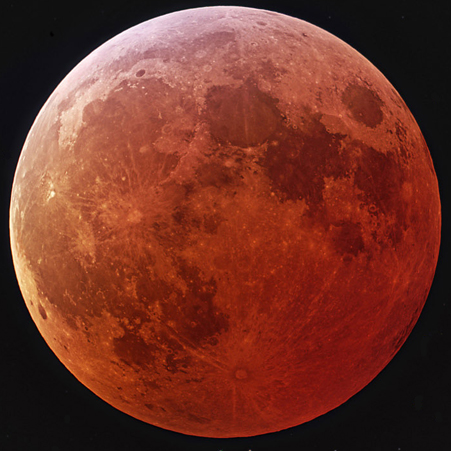
a peach, a sculpture by Jim Bond, the back of my right eye, the moon
Posted by john at 10:30 PM | Comments (2)
December 09, 2008
water's edge
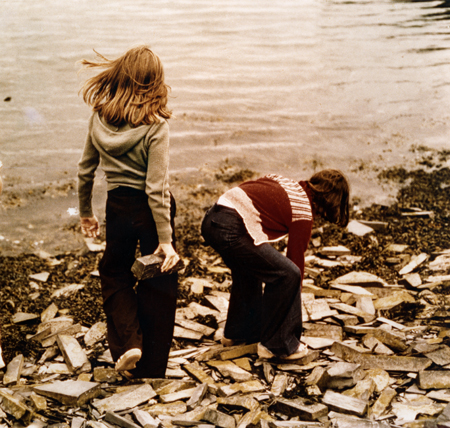
two girls throwing slate into the Menai Straits, Agfa CNS, 1974
Posted by john at 06:46 PM | Comments (1)
December 06, 2008
Of rain and reservoirs
Water, and in particular the soft water from the Pennine Hills, played an important part in the development of the Yorkshire woollen industry. By the time the Industrial Revolution had kicked in and big mills were being constructed in the valleys, there was a growing demand for a constant supply of water.
In 1836 work began on three reservoirs in the Holme Valley - Boshaw Whams, Holmestyes and Bilberry - with a view to regulating the flow of water in the River Holme.
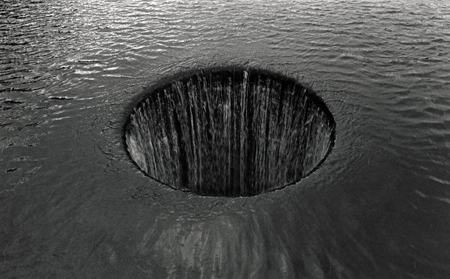
The overflow of Bilberry reservoir
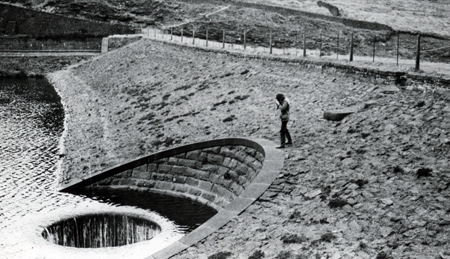
me photographing the overflow of Bilberry Reservoir, photo: Richard Coombes
Bilberry holds an important place in the history of the Holme Valley.
It was just before one o’clock on the morning of Wednesday 5th February 1852 that, after several days of heavy rain, the water level in Bilberry Reservoir rose to a dangerous level and began washing over the embankment. The dam was only clay and earth and as soon as the water flowed over the top it started to wash away the banking. Several large cracks appeared and the dam was breached.
Eighty-six million gallons of water, weighing over three hundred thousand tons, hit the Holme Valley and it’s inhabitants, and, as was reported in the London Illustrated News, “…hurried them without a moment’s warning into eternity.”
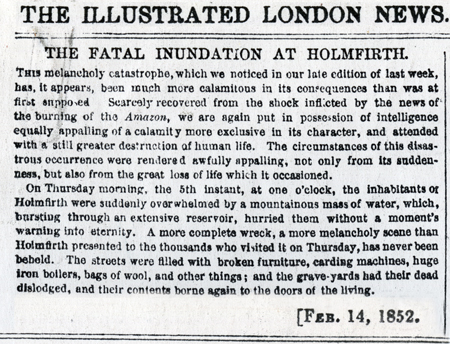
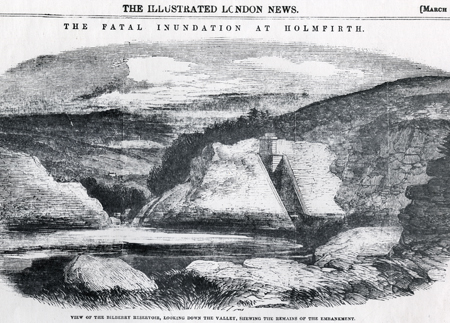
”view of the Bilberry Reservoir, looking down the Valley, shewing [sic] the remains of the Embankment”
The overflow chimney seems to be still standing, on the right of the breached embankment. The overflow was not working on the night of the 5th – the valve beyond the dam was jammed shut, and had been for many months.
A flood hit Holmfirth again in 1944. No reservoirs burst this time, just particularly persistent heavy rain.
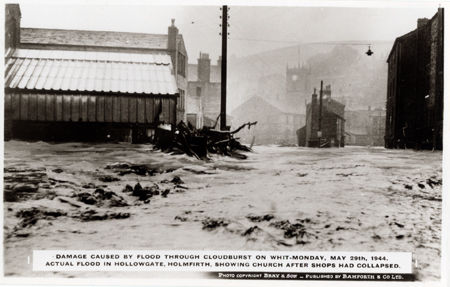
Hollowgate, Holmfirth, May 29 1944, photo Harry Bray
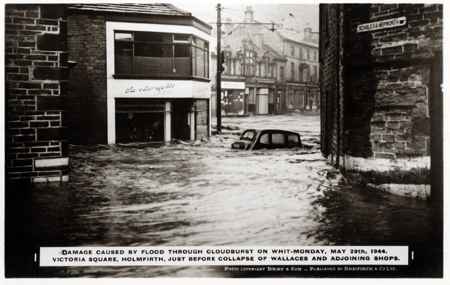
looking towards Victoria Street, Holmfirth, May 29 1944, photo Harry Bray
It was Harry’s son, Trevor, who sold us the film we were using to take the pictures above. Trevor Bray fuelled my first photographic endeavours, supplying 120 roll film for the Voigtlander camera, chemicals for developing and paper for printing, his patient advice always given with a smile. His daughter Helen is the third generation of Holmfirth photographers.
more about the 1852 flood here.
Posted by john at 01:35 AM | Comments (0)
December 05, 2008
David and Brian’s new songs
David Byrne and Brian Eno have been writing songs together again.
The first time for about 30 years apparently. The last time I remember them together was for the excellent My Life in the Bush of Ghosts which came out in 1981.

So here they are again with some more tunes. They’re going for the whole on-line thing, not selling the album through shops so much as through clickerty-clackerty internetty shenanigans.
Posted by john at 12:29 AM | Comments (0)
December 04, 2008
a short film about the mill
some stills...
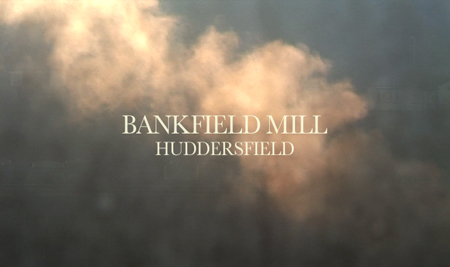
opening titles
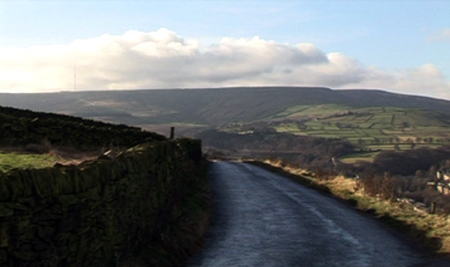
Black Hill and the Holme Moss television mast
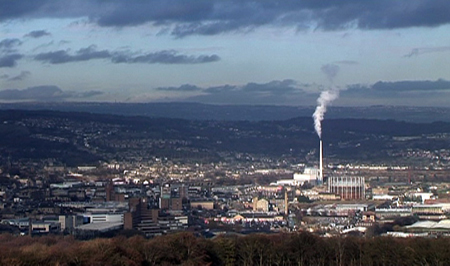
Huddersfield, West Yorkshire
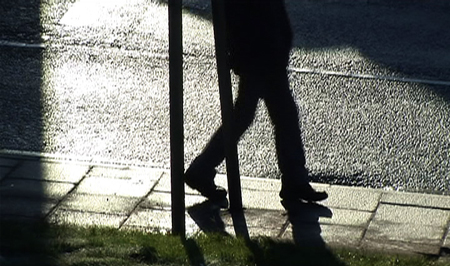
the man on the street
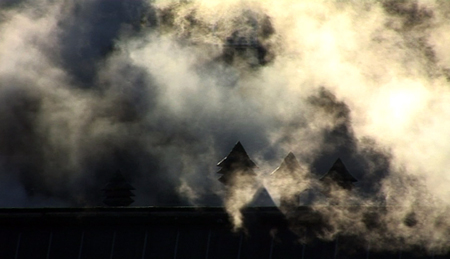
some of the steam Johnson's are wont to use in their finishing

and a pillar box, from the reign of King George
What a Georgian post-box has to do with Bankfield Mill you'll just have to wait and find out.
Posted by john at 12:53 AM | Comments (2)
December 03, 2008
Henry V

torso with projected text
Posted by john at 12:02 AM | Comments (0)
December 02, 2008
Of scutage...
Scutage, the tax paid by a vassal to his liege in lieu of military service, should not be confused with socage – land given to a vassal by his liege in return for payment or military service [see scutage].
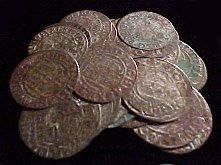
Now, land tenured by gavelkind is held to be socage, but only if the serf has alienated his land by feoffment and providing there is no escheat or attainder. Then, by salic patrimony, the land can be passed on to the agnatic heirs, though of course one-half of it is dowable and the wife, if widowed, can hold tenure by courtesy providing the land was seised and as long as she remains unmarried, even if the said land was burgage.
Good, glad we’ve cleared that up.
Posted by john at 01:16 AM | Comments (0)
December 01, 2008
words whose meaning we no longer need but perhaps should think up new meanings for because it would be sad to lose them
SCUTAGE n. tax paid by a vassal to his liege in lieu of military service.
Posted by john at 03:43 PM | Comments (0)